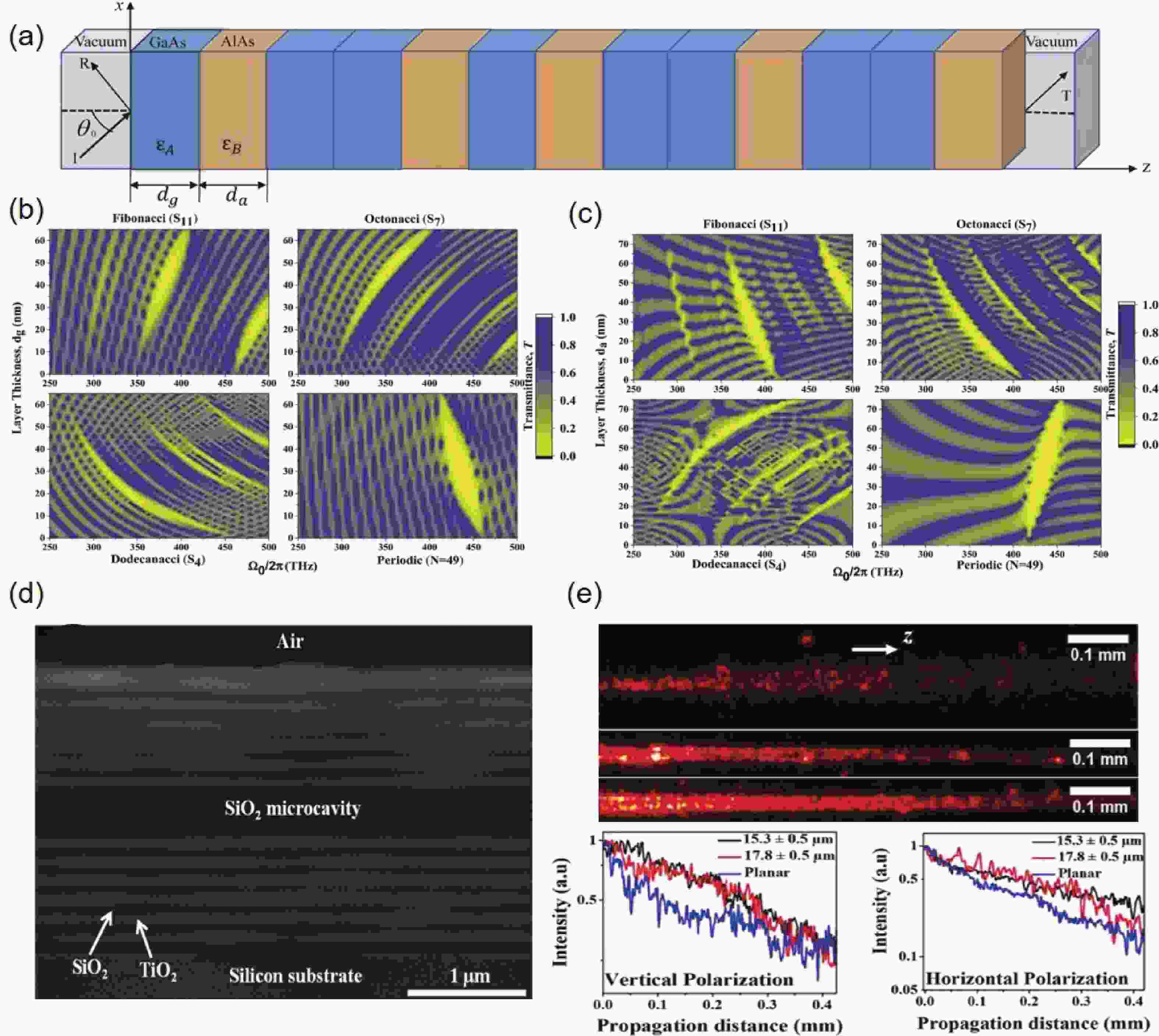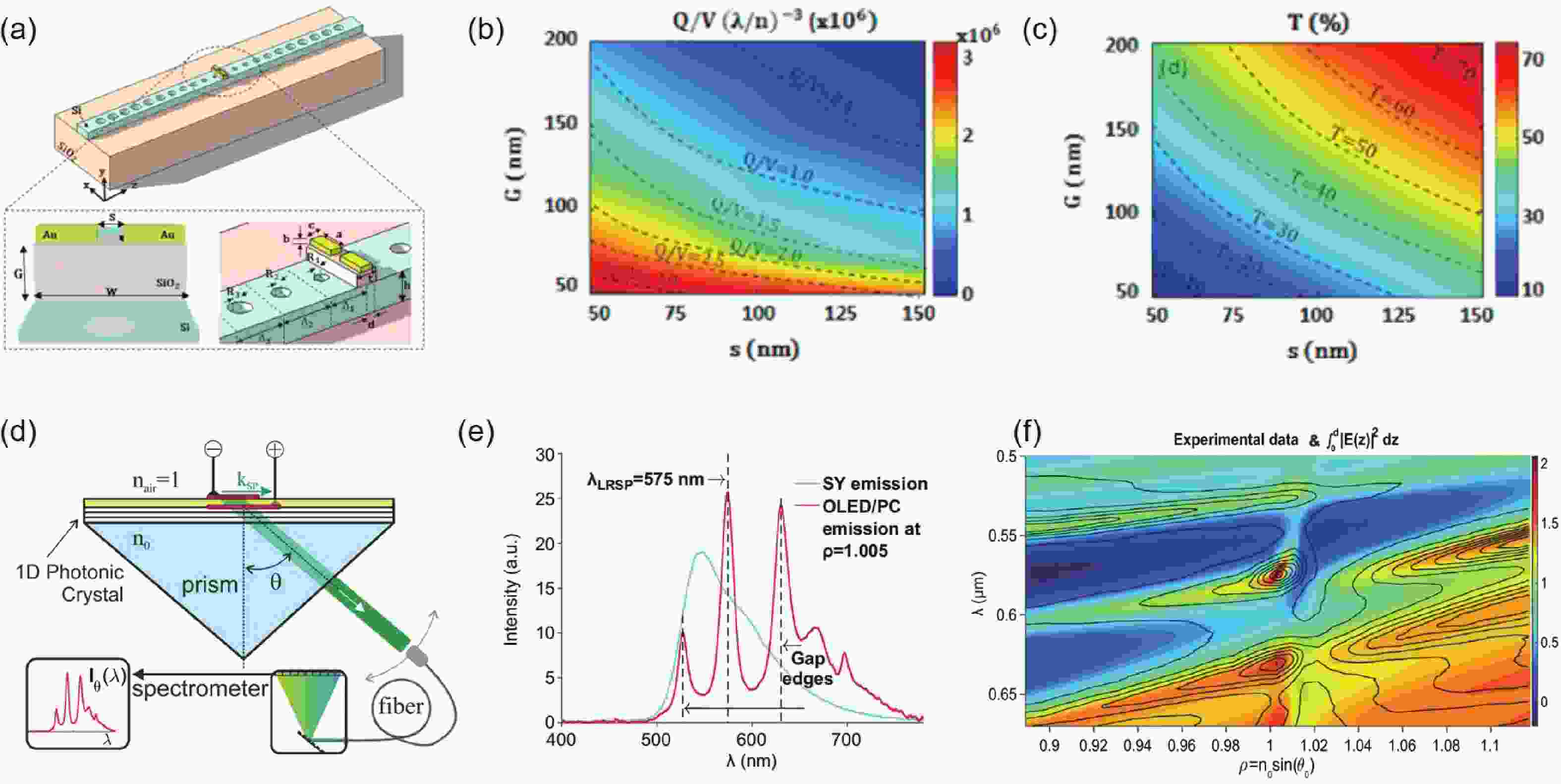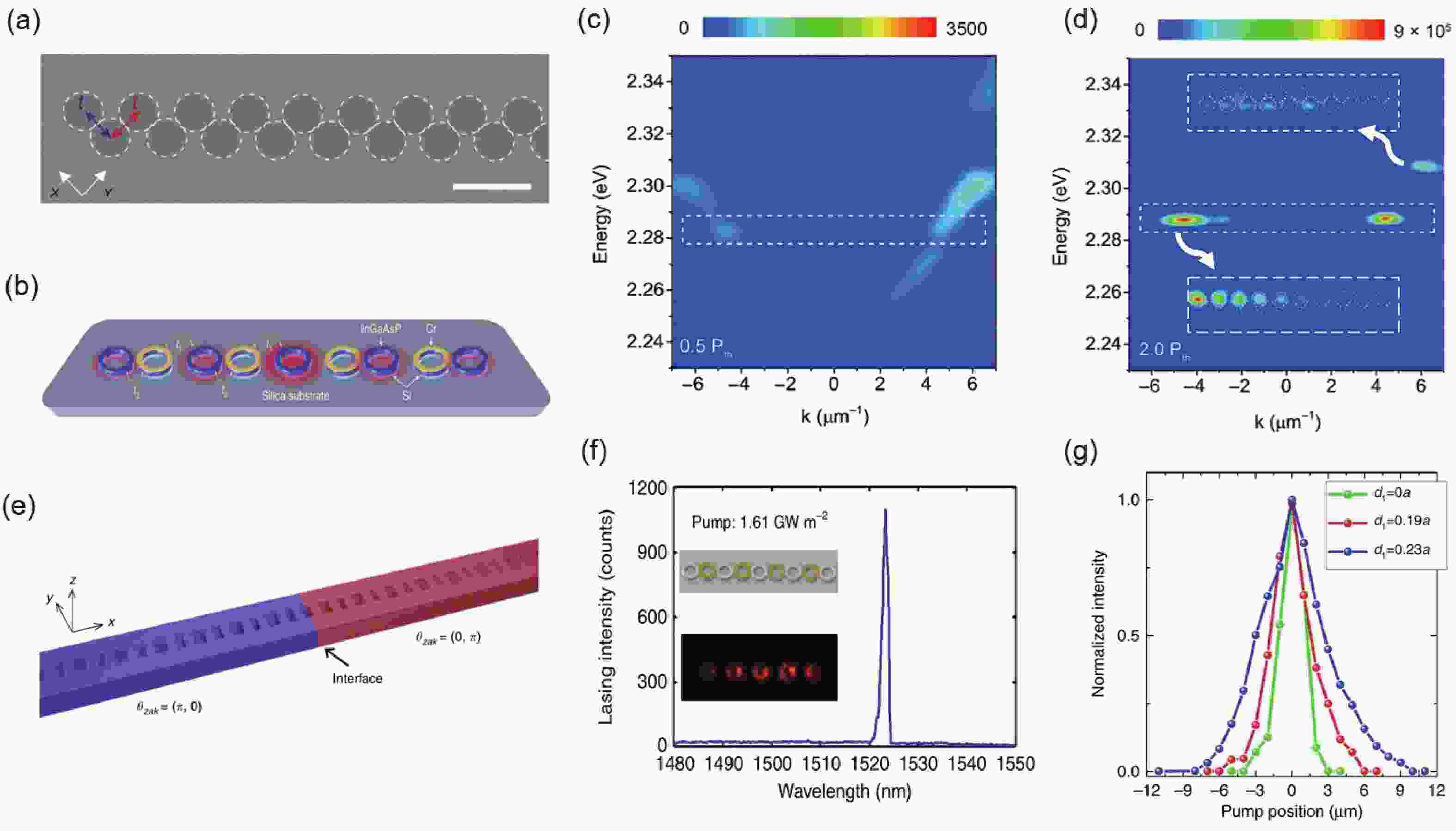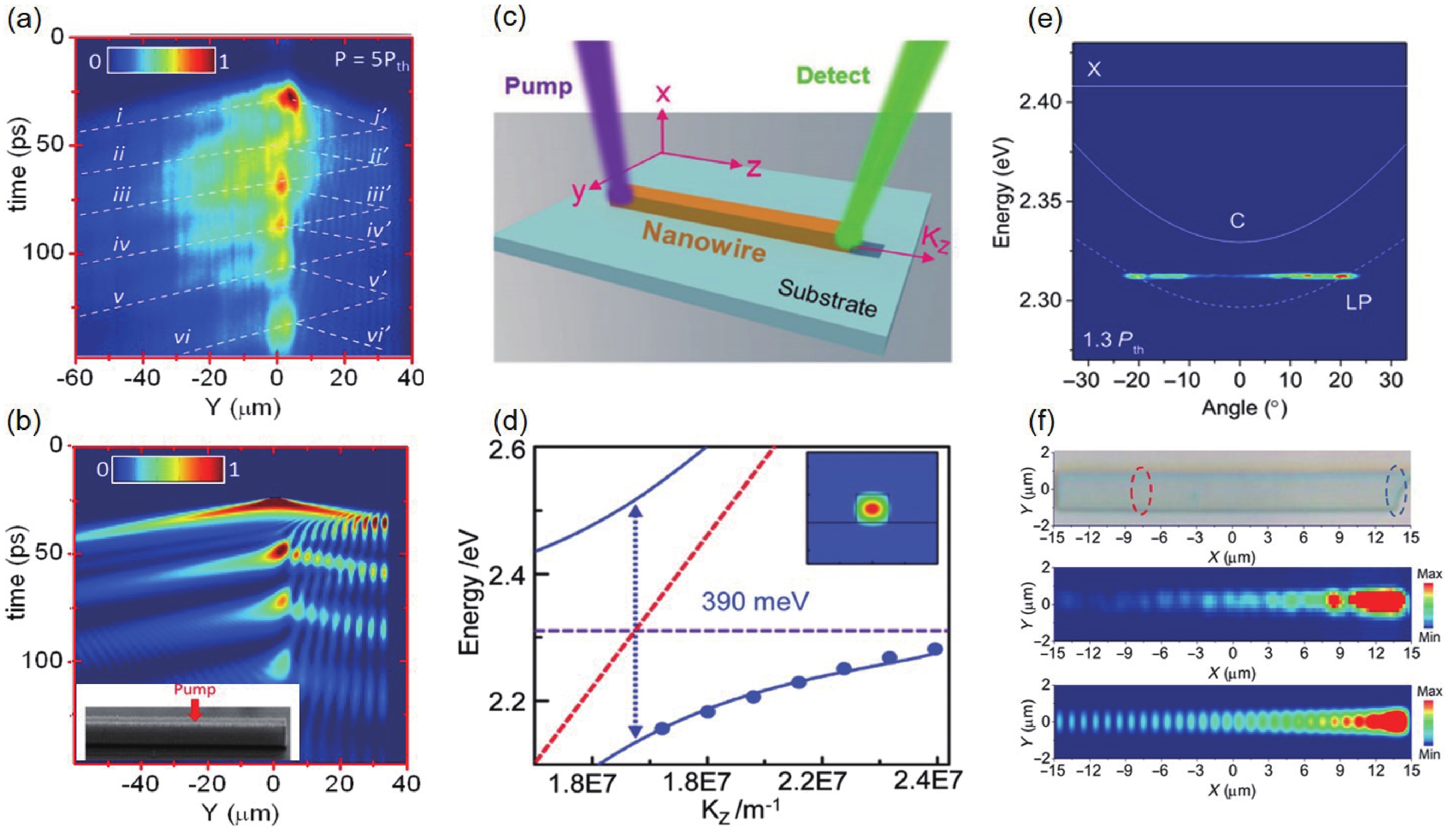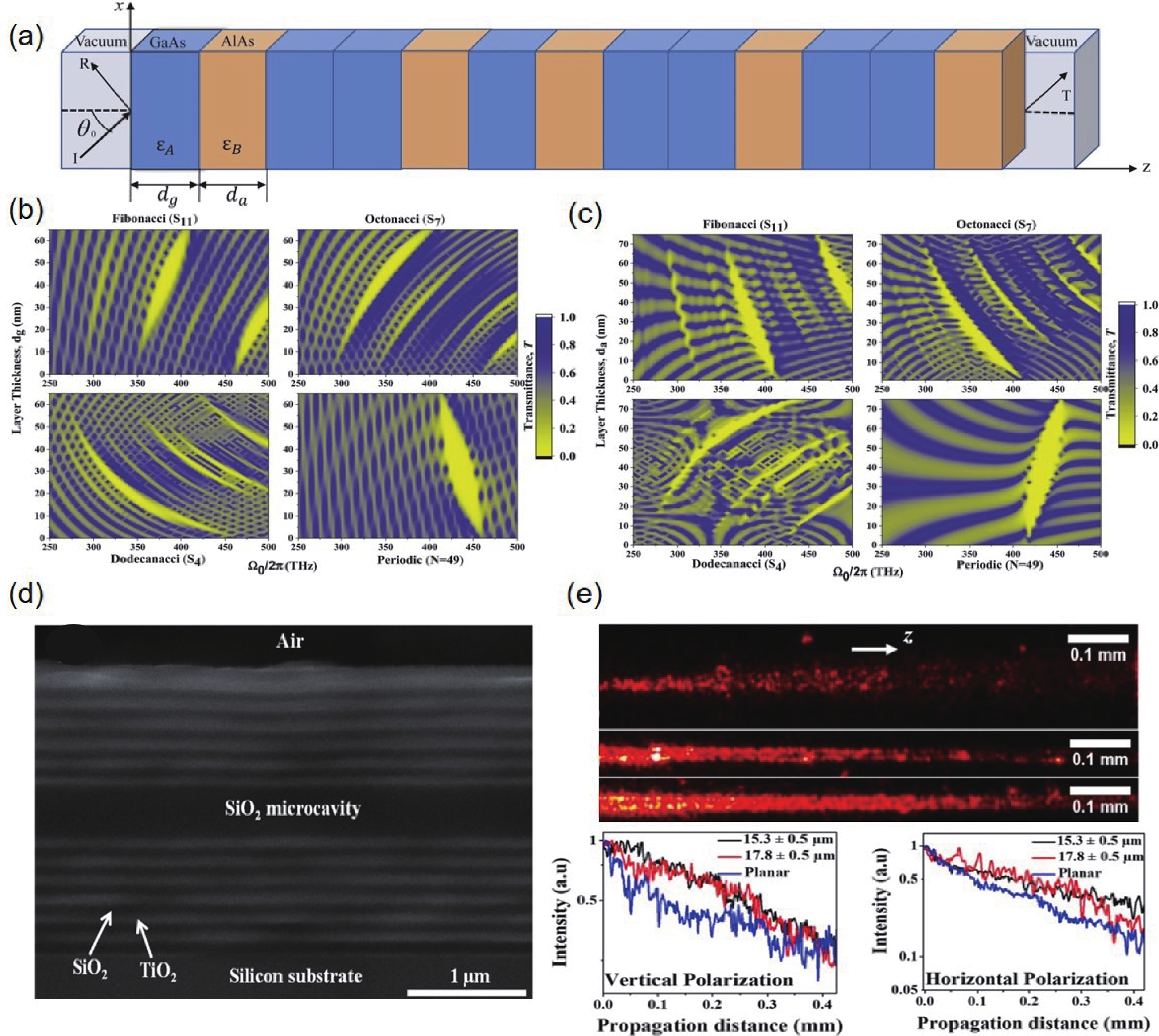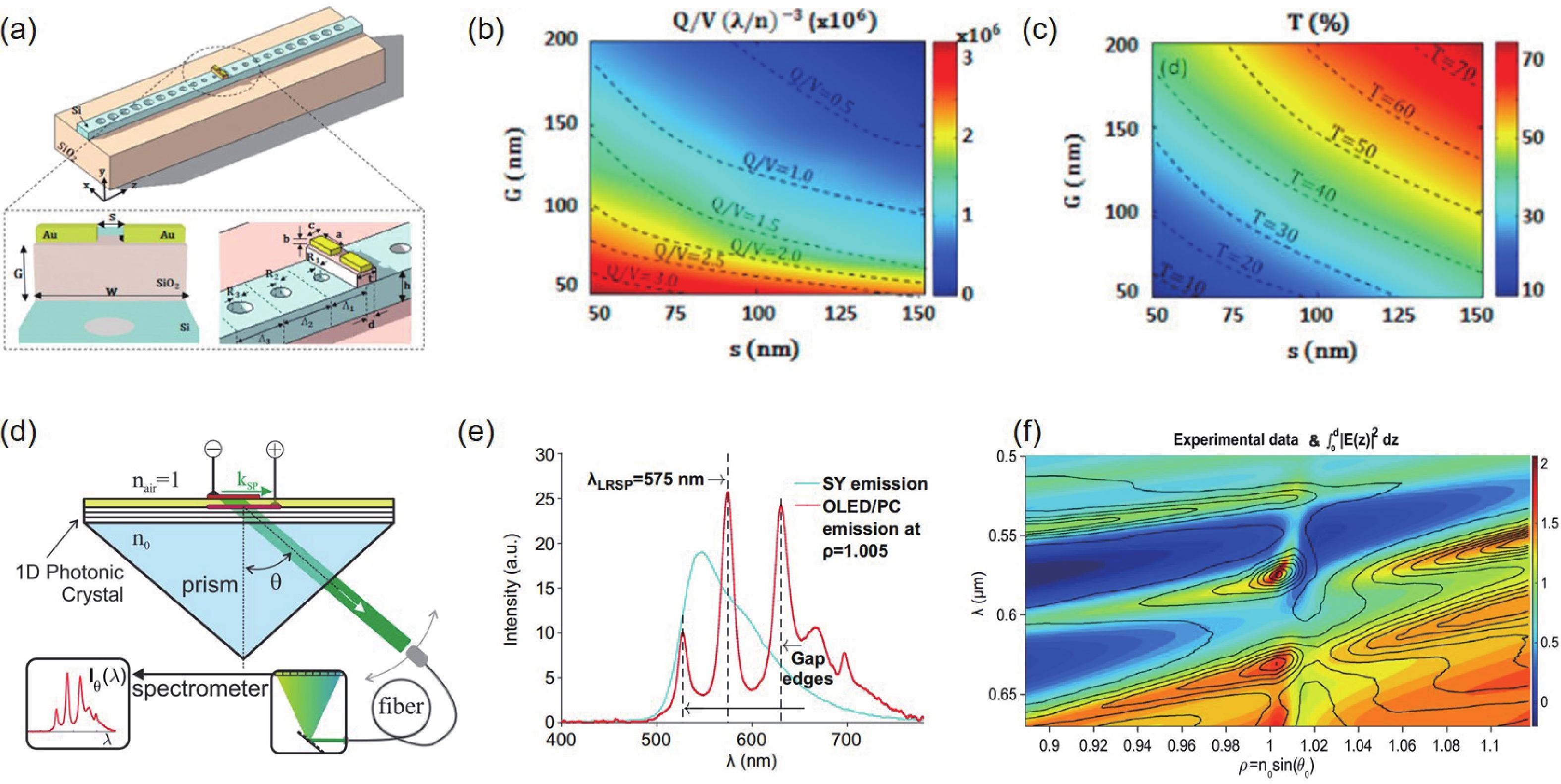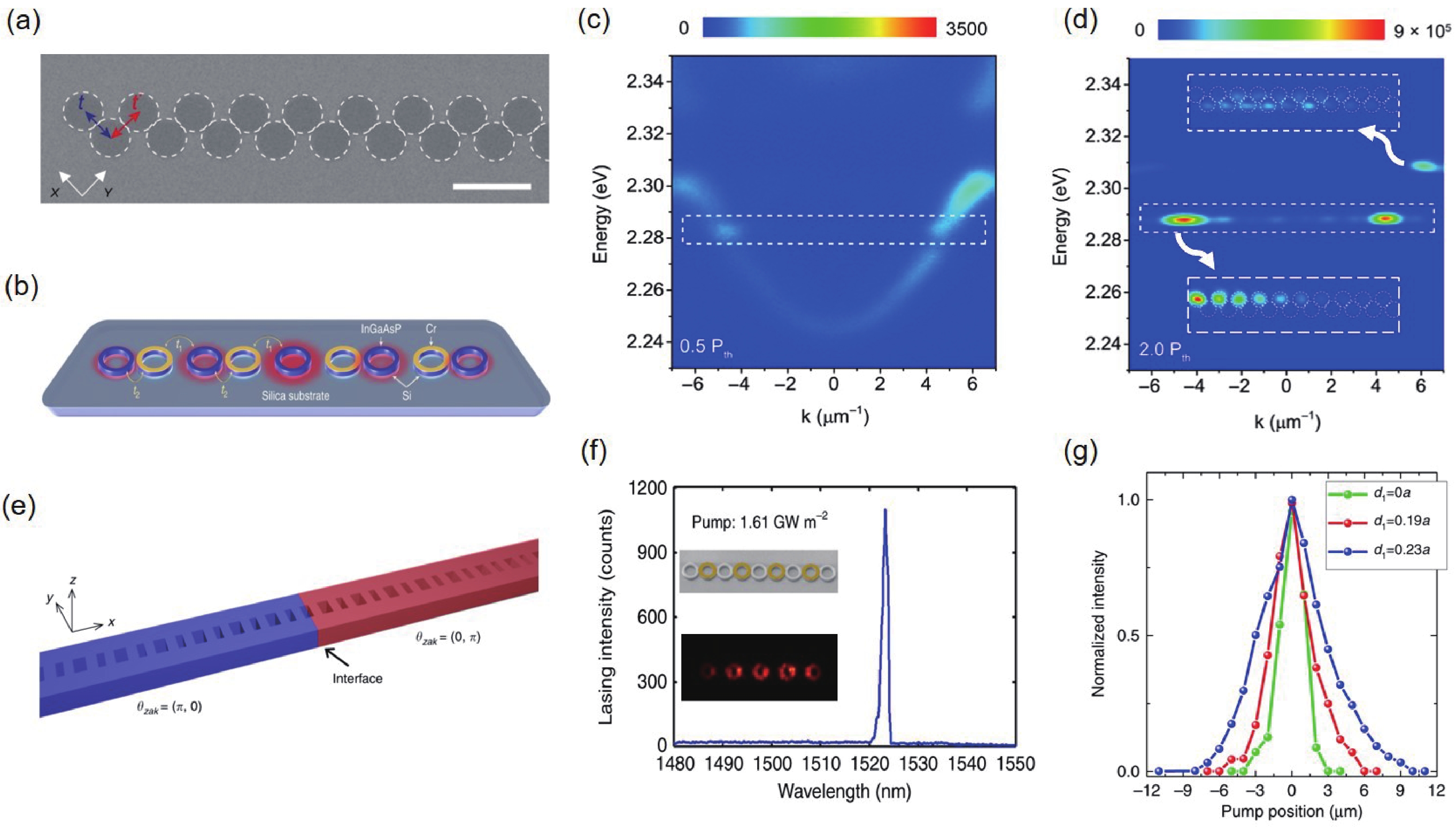| Citation: |
Yutong Zhang, Zhuoya Zhu, Shuai Zhang, Xianxin Wu, Wenna Du, Xinfeng Liu. Spectroscopy and carrier dynamics of one-dimensional nanostructures[J]. Journal of Semiconductors, 2022, 43(12): 121201. doi: 10.1088/1674-4926/43/12/121201
Y T Zhang, Z Y Zhu, S Zhang, X X Wu, W N Du, X F Liu. Spectroscopy and carrier dynamics of one-dimensional nanostructures[J]. J. Semicond, 2022, 43(12): 121201. doi: 10.1088/1674-4926/43/12/121201
Export: BibTex EndNote
|
Spectroscopy and carrier dynamics of one-dimensional nanostructures
doi: 10.1088/1674-4926/43/12/121201
More Information-
Abstract
In recent years, one-dimensional (1D) nanomaterials have raised researcher's interest because of their unique structural characteristic to generate and confine the optical signal and their promising prospects in photonic applications. In this review, we summarized the recent research advances on the spectroscopy and carrier dynamics of 1D nanostructures. First, the condensation and propagation of exciton–polaritons in nanowires (NWs) are introduced. Second, we discussed the properties of 1D photonic crystal (PC) and applications in photonic–plasmonic structures. Third, the observation of topological edge states in 1D topological structures is introduced. Finally, the perspective on the potential opportunities and remaining challenges of 1D nanomaterials is proposed. -
References
[1] García de Arquer F P, Talapin D V, Klimov V I, et al. Semiconductor quantum dots: Technological progress and future challenges. Science, 2021, 373, eaaz8541 doi: 10.1126/science.aaz8541[2] Weidman M C, Beck M E, Hoffman R S, et al. Monodisperse, air-stable PbS nanocrystals via precursor stoichiometry control. ACS Nano, 2014, 8, 6363 doi: 10.1021/nn5018654[3] Park Y S, Roh J, Diroll B, et al. Colloidal quantum dot lasers. Nat Rev Mater, 2021, 6, 382 doi: 10.1038/s41578-020-00274-9[4] Gur I, Fromer N A, Geier M L, et al. Air-stable all-inorganic nanocrystal solar cells processed from solution. Science, 2005, 310, 462 doi: 10.1126/science.1117908[5] Tan C L, Cao X H, Wu X J, et al. Recent advances in ultrathin two-dimensional nanomaterials. Chem Rev, 2017, 117, 6225 doi: 10.1021/acs.chemrev.6b00558[6] Li L H, Chen Y. Atomically thin boron nitride: Unique properties and applications. Adv Funct Mater, 2016, 26, 2594 doi: 10.1002/adfm.201504606[7] Weng Q H, Wang X B, Wang X, et al. Functionalized hexagonal boron nitride nanomaterials: Emerging properties and applications. Chem Soc Rev, 2016, 45, 3989 doi: 10.1039/C5CS00869G[8] Huang X, Zeng Z Y, Zhang H. Metal dichalcogenide nanosheets: Preparation, properties and applications. Chem Soc Rev, 2013, 42, 1934 doi: 10.1039/c2cs35387c[9] Zhang P, Zhang Y W, Wei Y, et al. Contact engineering for two-dimensional semiconductors. J Semicond, 2020, 41, 071901 doi: 10.1088/1674-4926/41/7/071901[10] Huo N J, Yang Y J, Li J B. Optoelectronics based on 2D TMDs and heterostructures. J Semicond, 2017, 38, 031002 doi: 10.1088/1674-4926/38/3/031002[11] Balandin A A, Ghosh S, Bao W Z, et al. Superior thermal conductivity of single-layer graphene. Nano Lett, 2008, 8, 902 doi: 10.1021/nl0731872[12] Wang K, Ma Q, Qu C X, et al. Review on 3D fabrication at nanoscale. Autex Res J, 2022, in press doi: 10.2478/aut-2022-0014[13] Zhao H, Lei Y. 3D nanostructures for the next generation of high-performance nanodevices for electrochemical energy conversion and storage. Adv Energy Mater, 2020, 10, 2001460 doi: 10.1002/aenm.202001460[14] Tan H, Liu Z H, Chao D L, et al. Partial nitridation-induced electrochemistry enhancement of ternary oxide nanosheets for fiber energy storage device. Adv Energy Mater, 2018, 8, 1800685 doi: 10.1002/aenm.201800685[15] Zhang S, Shang Q Y, Du W N, et al. Strong exciton-photon coupling in hybrid inorganic-organic perovskite micro/nanowires. Adv Opt Mater, 2018, 6, 1701032 doi: 10.1002/adom.201701032[16] Shang Q Y, Zhang S, Liu Z, et al. Surface plasmon enhanced strong exciton-photon coupling in hybrid inorganic-organic perovskite nanowires. Nano Lett, 2018, 18, 3335 doi: 10.1021/acs.nanolett.7b04847[17] Boubanga-Tombet S, Wright J B, Lu P, et al. Ultrafast carrier capture and auger recombination in single GaN/InGaN multiple quantum well nanowires. ACS Photonics, 2016, 3, 2237 doi: 10.1021/acsphotonics.6b00622[18] Shojaei I A, Linser S, Jnawali G, et al. Strong hot carrier effects in single nanowire heterostructures. Nano Lett, 2019, 19, 5062 doi: 10.1021/acs.nanolett.9b01345[19] Kind H, Yan H, Messer B, et al. Nanowire ultraviolet photodetectors and optical switches. Adv Mater, 2002, 14, 158 doi: 10.1002/1521-4095(20020116)14:2<158::AID-ADMA158>3.0.CO;2-W[20] Cui Y, Zhong Z H, Wang D L, et al. High performance silicon nanowire field effect transistors. Nano Lett, 2003, 3, 149 doi: 10.1021/nl025875l[21] Huang M H, Mao S, Feick H, et al. Room-temperature ultraviolet nanowire nanolasers. Science, 2001, 292, 1897 doi: 10.1126/science.1060367[22] Zhu H M, Fu Y P, Meng F, et al. Lead halide perovskite nanowire lasers with low lasing thresholds and high quality factors. Nat Mater, 2015, 14, 636 doi: 10.1038/nmat4271[23] Oulton R F, Sorger V J, Genov D A, et al. A hybrid plasmonic waveguide for subwavelength confinement and long-range propagation. Nat Photonics, 2008, 2, 496 doi: 10.1038/nphoton.2008.131[24] Wertz E, Amo A, Solnyshkov D D, et al. Propagation and amplification dynamics of 1D polariton condensates. Phys Rev Lett, 2012, 109, 216404 doi: 10.1103/PhysRevLett.109.216404[25] Wertz E, Ferrier L, Solnyshkov D D, et al. Spontaneous formation and optical manipulation of extended polariton condensates. Nat Phys, 2010, 6, 860 doi: 10.1038/nphys1750[26] Manni F, Lagoudakis K G, Pietka B, et al. Polariton condensation in a one-dimensional disordered potential. Phys Rev Lett, 2011, 106, 176401 doi: 10.1103/PhysRevLett.106.176401[27] Gudiksen M S, Lauhon L J, Wang J F, et al. Growth of nanowire superlattice structures for nanoscale photonics and electronics. Nature, 2002, 415, 617 doi: 10.1038/415617a[28] Du W N, Wu X X, Zhang S, et al. All optical switching through anistropic gain of CsPbBr3 single crystal microplatelet. Nano Lett, 2022, 22, 4049 doi: 10.1021/acs.nanolett.2c00712[29] Wang Z Y, Liu J Y, Xu Z Q, et al. Wavelength-tunable waveguides based on polycrystalline organic-inorganic perovskite microwires. Nanoscale, 2016, 8, 6258 doi: 10.1039/C5NR06262D[30] Shang Q Y, Li C, Zhang S, et al. Enhanced optical absorption and slowed light of reduced-dimensional CsPbBr3 nanowire crystal by exciton-polariton. Nano Lett, 2020, 20, 1023 doi: 10.1021/acs.nanolett.9b04175[31] Lauhon L J, Gudiksen M S, Wang D L, et al. Epitaxial core–shell and core–multishell nanowire heterostructures. Nature, 2002, 420, 57 doi: 10.1038/nature01141[32] Shahmohammadi M, Ganière J D, Zhang H, et al. Excitonic diffusion in InGaN/GaN core-shell nanowires. Nano Lett, 2016, 16, 243 doi: 10.1021/acs.nanolett.5b03611[33] Meng Y, Lai Z X, Li F Z, et al. Perovskite core-shell nanowire transistors: Interfacial transfer doping and surface passivation. ACS Nano, 2020, 14, 12749 doi: 10.1021/acsnano.0c03101[34] Ray S K, Katiyar A K, Raychaudhuri A K. One-dimensional Si/Ge nanowires and their heterostructures for multifunctional applications-a review. Nanotechnology, 2017, 28, 092001 doi: 10.1088/1361-6528/aa565c[35] Kumar G S, Sumukam R R, Rajaboina R K, et al. Perovskite nanowires for next-generation optoelectronic devices: Lab to fab. ACS Appl Energy Mater, 2022, 5, 1342 doi: 10.1021/acsaem.1c03284[36] Barrigón E, Heurlin M, Bi Z X, et al. Synthesis and applications of III-V nanowires. Chem Rev, 2019, 119, 9170 doi: 10.1021/acs.chemrev.9b00075[37] Yan R X, Gargas D, Yang P D. Nanowire photonics. Nat Photonics, 2009, 3, 569 doi: 10.1038/nphoton.2009.184[38] Yuan X M, Pan D, Zhou Y J, et al. Selective area epitaxy of III-V nanostructure arrays and networks: Growth, applications, and future directions. Appl Phys Rev, 2021, 8, 021302 doi: 10.1063/5.0044706[39] Handoko A D, Goh G K L. One-dimensional perovskite nanostructures. Sci Adv Mater, 2010, 2, 16 doi: 10.1166/sam.2010.1079[40] Yang P, Yan H, Mao S, et al. Controlled growth of ZnO nanowires and their optical properties. Adv Funct Mater, 2002, 12, 323 doi: 10.1002/1616-3028(20020517)12:5<323::AID-ADFM323>3.0.CO;2-G[41] Ganji S. Nanowire growths, and mechanisms of these growths for developing novel nanomaterials. J Nanosci Nanotechnol, 2019, 19, 1849 doi: 10.1166/jnn.2019.16016[42] Ye C H. Recent progress in understanding the growth mechanism of one-dimensional nanostructures by vapor phase processes. Sci Adv Mat, 2010, 2, 365 doi: 10.1166/sam.2010.1102[43] Fortuna S A, Li X L. Metal-catalyzed semiconductor nanowires: A review on the control of growth directions. Semicond Sci Technol, 2010, 25, 024005 doi: 10.1088/0268-1242/25/2/024005[44] Zhang J. Perovskite exciton-polaritons. J Semicond, 2019, 40, 020201 doi: 10.1088/1674-4926/40/2/020201[45] Du W N, Zhang S, Zhang Q, et al. Recent progress of strong exciton-photon coupling in lead halide perovskites. Adv Mater, 2019, 31, e1804894 doi: 10.1002/adma.201804894[46] Zhang S, Zhong Y G, Yang F, et al. Cavity engineering of two-dimensional perovskites and inherent light-matter interaction. Photonics Res, 2020, 8, 72 doi: 10.1364/PRJ.400259[47] Zhang Q, Shang Q Y, Su R, et al. Halide perovskite semiconductor lasers: Materials, cavity design, and low threshold. Nano Lett, 2021, 21, 1903 doi: 10.1021/acs.nanolett.0c03593[48] Chen J, Du W N, Shi M L, et al. Perovskite quantum dot lasers. Infomat, 2020, 2, 170 doi: 10.1002/inf2.12051[49] Zhang Q, Su R, Du W N, et al. Advances in small perovskite-based lasers. Small Methods, 2017, 1, 1700163 doi: 10.1002/smtd.201700163[50] Zhao C Y, Qin C J. Quasi-2D lead halide perovskite gain materials toward electrical pumping laser. Nanophotonics, 2021, 10, 2167 doi: 10.1515/nanoph-2020-0630[51] Liu H N, Zhang H, Xu X L, et al. The opto-electronic functional devices based on three-dimensional lead halide perovskites. Appl Sci, 2021, 11, 1453 doi: 10.3390/app11041453[52] Kasprzak J, Richard M, Kundermann S, et al. Bose–Einstein condensation of exciton polaritons. Nature, 2006, 443, 409 doi: 10.1038/nature05131[53] Kavokin A, Liew T C H, Schneider C, et al. Polariton condensates for classical and quantum computing. Nat Rev Phys, 2022, 4, 435 doi: 10.1038/s42254-022-00447-1[54] Su R, Fieramosca A, Zhang Q, et al. Perovskite semiconductors for room-temperature exciton-polaritonics. Nat Mater, 2021, 20, 1315 doi: 10.1038/s41563-021-01035-x[55] Su R, Ghosh S, Wang J, et al. Observation of exciton polariton condensation in a perovskite lattice at room temperature. Nat Phys, 2020, 16, 301 doi: 10.1038/s41567-019-0764-5[56] Ardizzone V, De Marco L, De Giorgi M, et al. Emerging 2D materials for room-temperature polaritonics. Nanophotonics, 2019, 8, 1547 doi: 10.1515/nanoph-2019-0114[57] Amo A, Lefrère J, Pigeon S, et al. Superfluidity of polaritons in semiconductor microcavities. Nat Phys, 2009, 5, 805 doi: 10.1038/nphys1364[58] Chen Q J, Stajic J, Tan S N, et al. BCS-BEC crossover: From high temperature superconductors to ultracold superfluids. Phys Rep, 2005, 412, 1 doi: 10.1016/j.physrep.2005.02.005[59] Yang H, Kim NY. Microcavity exciton-polariton quantum spin fluids. Adv Quantum Technol, 2022, 12, 2100137 doi: 10.1002/qute.202100137[60] Amo A, Sanvitto D, Laussy F P, et al. Collective fluid dynamics of a polariton condensate in a semiconductor microcavity. Nature, 2009, 457, 291 doi: 10.1038/nature07640[61] Lagoudakis K G, Wouters M, Richard M, et al. Quantized vortices in an exciton–polariton condensate. Nat Phys, 2008, 4, 706 doi: 10.1038/nphys1051[62] Lagoudakis K G, Ostatnický T, Kavokin A V, et al. Observation of half-quantum vortices in an exciton-polariton condensate. Science, 2009, 326, 974 doi: 10.1126/science.1177980[63] Gao X H, Hu W, Stefan S, et al. Unidirectional vortex waveguides and multistable vortex pairs in polariton condensates. Opt Lett, 2022, 47, 3235 doi: 10.1364/OL.457724[64] Ardizzone V, Riminucci F, Zanotti S, et al. Polariton Bose–Einstein condensate from a bound state in the continuum. Nature, 2022, 605, 447 doi: 10.1038/s41586-022-04583-7[65] Yang F, Wang A C, Yue S, et al. Lead-free perovskites: Growth, properties, and applications. Sci China Mater, 2021, 64, 2889 doi: 10.1007/s40843-021-1755-4[66] Xie W, Dong H X, Zhang S F, et al. Room-temperature polariton parametric scattering driven by a one-dimensional polariton condensate. Phys Rev Lett, 2012, 108, 166401 doi: 10.1103/PhysRevLett.108.166401[67] Zhao J X, Su R, Fieramosca A, et al. Ultralow threshold polariton condensate in a monolayer semiconductor microcavity at room temperature. Nano Lett, 2021, 21, 3331 doi: 10.1021/acs.nanolett.1c01162[68] Su R, Diederichs C, Wang J, et al. Room-temperature polariton lasing in all-inorganic perovskite nanoplatelets. Nano Lett, 2017, 17, 3982 doi: 10.1021/acs.nanolett.7b01956[69] Bajoni D. Polariton lasers. Hybrid light-matter lasers without inversion. J Phys D, 2012, 45, 313001 doi: 10.1088/0022-3727/45/31/313001[70] Su R, Wang J, Zhao J X, et al. Room temperature long-range coherent exciton polariton condensate flow in lead halide perovskites. Sci Adv, 2018, 4, eaau0244 doi: 10.1126/sciadv.aau0244[71] Joannopoulos J D, Villeneuve P R, Fan S H. Photonic crystals: Putting a new twist on light. Nature, 1997, 386, 143 doi: 10.1038/386143a0[72] Birner A, Wehrspohn R B, Gösele U M, et al. Silicon-based photonic crystals. Adv Mater, 2001, 13, 377 doi: 10.1002/1521-4095(200103)13:6<377::AID-ADMA377>3.0.CO;2-X[73] Biswal A, Kumar R, Nayak C, et al. Photonic bandgap characteristics of GaAs/AlAs-based one-dimensional quasi-periodic photonic crystal. Optik, 2021, 234, 166597 doi: 10.1016/j.ijleo.2021.166597[74] Sudha Maria LIS S, Rajasimha K, Debnath K, et al. Femtosecond laser micromachined one-dimensional photonic crystal channel waveguides. Opt Mater, 2022, 126, 112114 doi: 10.1016/j.optmat.2022.112114[75] Zayats A V, Smolyaninov I I, Maradudin A A. Nano-optics of surface plasmon polaritons. Phys Rep, 2005, 408, 131 doi: 10.1016/j.physrep.2004.11.001[76] Shi J W, Zhu J R, Wu X X, et al. Enhanced trion emission and carrier dynamics in monolayer WS2 coupled with plasmonic nanocavity. Adv Optical Mater, 2020, 8, 2001147 doi: 10.1002/adom.202001147[77] Wu X X, Jiang W Y, Wang X F, et al. Inch-scale ball-in-bowl plasmonic nanostructure arrays for polarization-independent second-harmonic generation. ACS Nano, 2021, 15, 1291 doi: 10.1021/acsnano.0c08498[78] Ma H Y, Wu X X, Du W, et al. Edge Raman enhancement at layered PbI2 platelets induced by laser waveguide effect. Nanotechnology, 2022, 33, 035203 doi: 10.1088/1361-6528/ac2e5a/meta[79] Kuttge M, García de Abajo F J, Polman A. Ultrasmall mode volume plasmonic nanodisk resonators. Nano Lett, 2010, 10, 1537 doi: 10.1021/nl902546r[80] Chikkaraddy R, de Nijs B, Benz F, et al. Single-molecule strong coupling at room temperature in plasmonic nanocavities. Nature, 2016, 535, 127 doi: 10.1038/nature17974[81] Barth M, Schietinger S, Fischer S, et al. Nanoassembled plasmonic-photonic hybrid cavity for tailored light-matter coupling. Nano Lett, 2010, 10, 891 doi: 10.1021/nl903555u[82] Conteduca D, Reardon C, Scullion M G, et al. Ultra-high Q/V hybrid cavity for strong light-matter interaction. APL Photonics, 2017, 2, 086101 doi: 10.1063/1.4994056[83] Conteduca D, Dell’Olio F, Innone F, et al. Rigorous design of an ultra-high Q/V photonic/plasmonic cavity to be used in biosensing applications. Opt Laser Technol, 2016, 77, 151 doi: 10.1016/j.optlastec.2015.08.016[84] Konopsky V, Prokhorov V, Lypenko D, et al. Electrical excitation of long-range surface plasmons in PC/OLED structure with two metal nanolayers. Nanomicro Lett, 2020, 12, 35 doi: 10.1007/s40820-020-0369-7[85] Wu Z, Zhang L, Sun W, et al. Realization of two-dimensional spin-orbit coupling for Bose-Einstein condensates. Science, 2016, 354, 83 doi: 10.1126/science.aaf6689[86] Neto A H C, Guinea F, Peres N M R, et al. The electronic properties of graphene. Rev Mod Phys, 2009, 81, 109 doi: 10.1103/RevModPhys.81.109[87] Phani A S, Woodhouse J, Fleck N A. Wave propagation in two-dimensional periodic lattices. J Acoust Soc Am, 2006, 119, 1995 doi: 10.1121/1.2179748[88] Su R, Ghosh S, Liew T C H, et al. Optical switching of topological phase in a perovskite polariton lattice. Sci Adv, 2021, 7, eabf8049 doi: 10.1126/sciadv.abf8049[89] St-Jean P, Goblot V, Galopin E, et al. Lasing in topological edge states of a one-dimensional lattice. Nat Photonics, 2017, 11, 651 doi: 10.1038/s41566-017-0006-2[90] Pernet N, St-Jean P, Solnyshkov D D, et al. Gap solitons in a one-dimensional driven-dissipative topological lattice. Nat Phys, 2022, 18, 678 doi: 10.1038/s41567-022-01599-8[91] Parto M, Wittek S, Hodaei H, et al. Edge-mode lasing in 1D topological active arrays. Phys Rev Lett, 2018, 120, 113901 doi: 10.1103/PhysRevLett.120.113901[92] Zhu X, Wang H, Gupta S K, et al. Photonic non-Hermitian skin effect and non-Bloch bulk-boundary correspondence. Phys Rev Res, 2020, 2, 013280 doi: 10.1103/PhysRevResearch.2.013280[93] Zhao H, Miao P, Teimourpour M H, et al. Topological hybrid silicon microlasers. Nat Commun, 2018, 9, 981 doi: 10.1038/s41467-018-03434-2[94] Xiao M, Zhang Z Q, Chan C T. Surface impedance and bulk band geometric phases in one-dimensional systems. Phys Rev X, 2014, 4, 021017 doi: 10.1103/PhysRevX.4.021017[95] Ota Y, Katsumi R, Watanabe K, et al. Topological photonic crystal nanocavity laser. Commun Phys, 2018, 1, 86 doi: 10.1038/s42005-018-0083-7[96] Jin D F, Christensen T, Soljačić M, et al. Infrared topological plasmons in graphene. Phys Rev Lett, 2017, 118, 245301 doi: 10.1103/PhysRevLett.118.245301[97] Fang K J, Yu Z F, Fan S H. Realizing effective magnetic field for photons by controlling the phase of dynamic modulation. Nat Photonics, 2012, 6, 782 doi: 10.1038/nphoton.2012.236 -
Proportional views






 DownLoad:
DownLoad:
